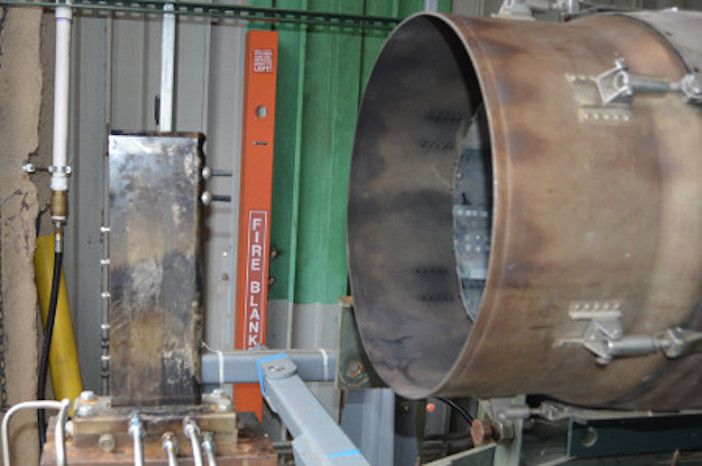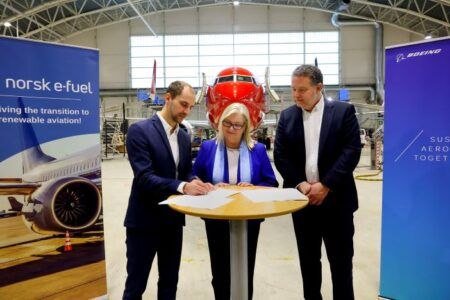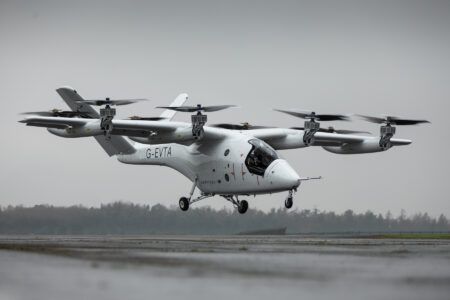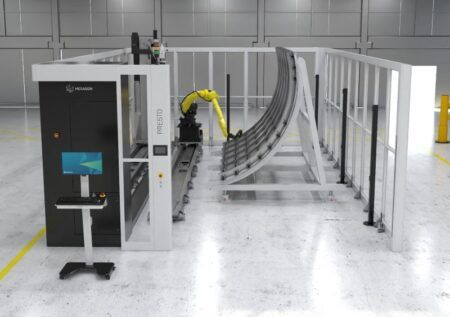A sample of additively manufactured silicon oxycarbide is tested at Arnold Air Force Base. (Image: AFRL)
The US Air Force is testing materials produced through ceramic additive manufacturing to advance their potential future use in hypersonic flight vehicles.
Scientists with the Air Force Research Laboratory (AFRL) Aerospace Systems Directorate recently entered into a Cooperative R&D – Material Transfer Agreement with research center HRL Laboratories to test additively manufactured silicon oxycarbide (SiOC) materials.
Components that can be produced through additive manufacturing can be geometrically more complex than those produced by subtractive manufacturing methods. The refractory nature of ceramics could also provide useful in hypersonic flight, believe the researchers.
Hypersonic flight is conducted through the atmosphere below an altitude of around 90km at speeds above Mach 5. This exposes the materials of the aircraft to extreme environments including high temperatures.
Hypersonic fight would enable for much faster military response times, more advanced weapons and drastically decreased travel times for the military and commercial sectors with speeds over 4,000mph.
Jamie Szmodis, a hypersonic research engineer with the Aerospace Systems Directorate, said, “If a material can withstand temperatures of roughly 3,200˚F, it could be used for hypersonic aircraft engine components like struts or flame holders.”
The potential of the HRL-produced materials for demanding Air Force applications became apparent while Aerospace Systems Directorate scientists were searching for new thermocouple radiation shields.
The SiOC materials were produced through an additive manufacturing process that uses a pre-ceramic resin. Following part fabrication, the pre-ceramic resin was heat treated to convert the component to a fully ceramic state.
AFRL and HRL entered an agreement that allows for the transfer of materials from HRL to AFRL to test the material. “Without the material transfer agreement, we would have purchased the samples to test them. We would have been a customer, as opposed to a collaborator,” said Szmodis. “With the agreement we are able to provide test results to HRL and provide feedback that is valuable to both parties.”
Under the agreement the directorate received five thermocouple radiation shields and 15 sample cylinders manufactured from the SiOC resin.
Szmodis established a small team of scientists from multiple directorates and specialties to conduct materials analysis and heat treatments, mechanical analysis – which focused on thermal expansion analysis at temperatures ranging from 500 – 3,500˚F and analysis of the material’s characteristics in a high-enthalpy instrumentation test facility.
A final report of the results was completed last month and delivered to HRL. During the course of their collaborative study, AFRL and HRL pushed the additively manufactured components far beyond their design envelope.
The data which emerged from this extreme testing has provided valuable information that is currently being used to guide the production of next-generation additively manufactured ceramics. These recommendations and further advances by HRL have the potential to produce materials that can meet the hypersonic requirements.
“The extreme temperature testing that AFRL performed revealed the limits of our new material and challenged us to improve it,” said Dr. Tobias Schaedler, a senior scientist from HRL.
April 9, 2018





